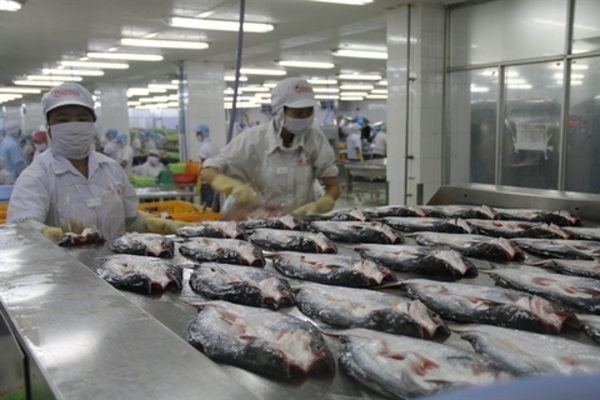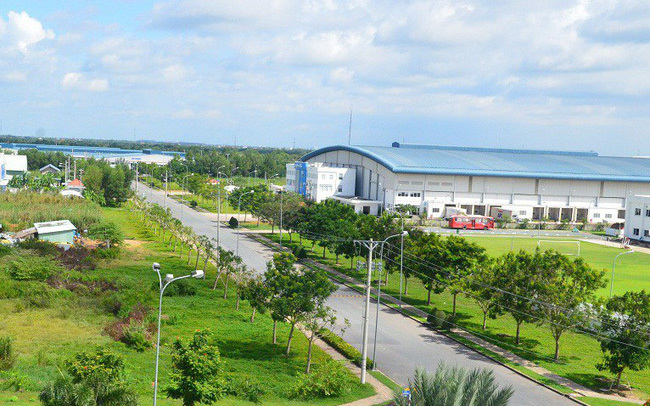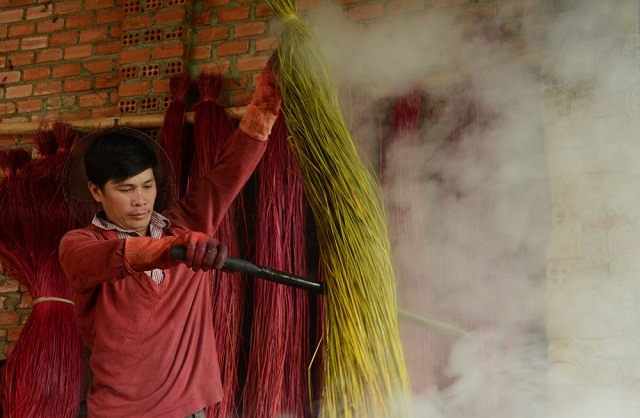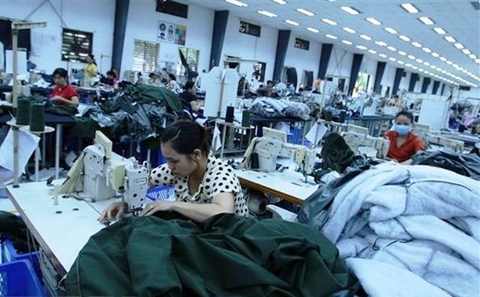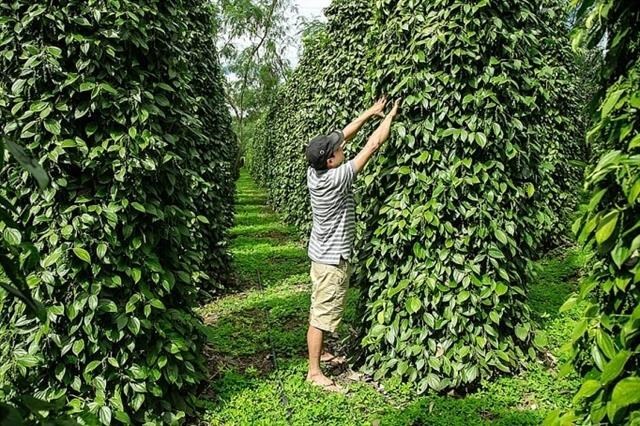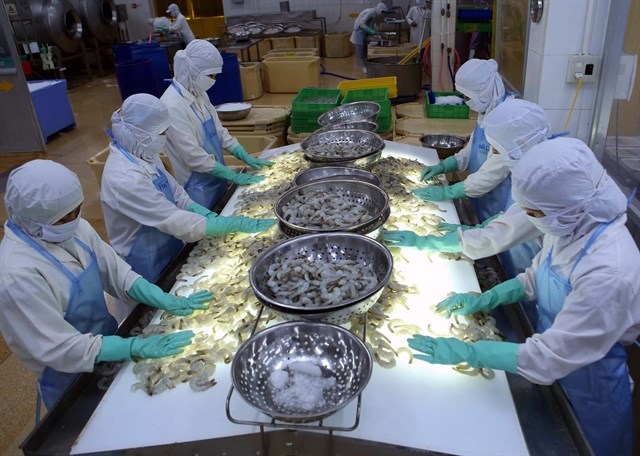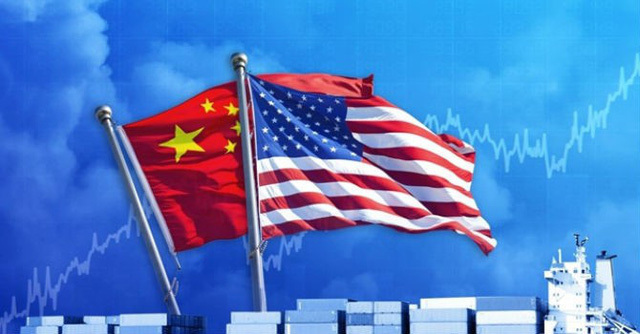- © Copyright of Vietnamnet Global.
- Tel: 024 3772 7988 Fax: (024) 37722734
- Email: evnn@vietnamnet.vn
FTAs
Update news FTAs
FTAs to help Vietnamese farm produce access new markets
 Participation in new generation FTAs opens new cooperation opportunities for businesses in Viet Nam’s agricultural sector, but challenges remain.
Participation in new generation FTAs opens new cooperation opportunities for businesses in Viet Nam’s agricultural sector, but challenges remain.
Vietnam faces challenges in implementing new generation FTAs
 Labor force quality is still a main obstacle for Vietnam to overcome.
Labor force quality is still a main obstacle for Vietnam to overcome.
Industrial real estate thrives on FDI increase
 Existing factors in the market, especially strong FDI inflow, all are supporting the prosperity of the industrial real estate market.
Existing factors in the market, especially strong FDI inflow, all are supporting the prosperity of the industrial real estate market.
Localities fear pollution from textile and garment industry
 Many cities/provinces reject textile and garment projects because of fear of the negative impact on the environment.
Many cities/provinces reject textile and garment projects because of fear of the negative impact on the environment.
Trade deals bring more foreign investment but also challenges
 With its series of recent free trade agreements, Vietnam is becoming very attractive to foreign businesses, especially in the textile and garment sector.
With its series of recent free trade agreements, Vietnam is becoming very attractive to foreign businesses, especially in the textile and garment sector.
VN pepper sector urged to renew growth model
 Experts have said Vietnam's pepper industry had better change its growth model and enhance quality to take advantage of free trade agreements (FTAs).
Experts have said Vietnam's pepper industry had better change its growth model and enhance quality to take advantage of free trade agreements (FTAs).
FTAs force Vietnam to reform business environment: Experts
 Vietnam is said to change its regulatory framework to tap potential offered by FTAs.
Vietnam is said to change its regulatory framework to tap potential offered by FTAs.
FTAs rouse Taiwanese investors
 Shih Rui-Chi, representative of the Taipei Economic and Cultural Office in Vietnam, writes about the prospects of Taiwanese investment in Vietnam in the context of the country entering the CPTPP and the EVFTA this year.
Shih Rui-Chi, representative of the Taipei Economic and Cultural Office in Vietnam, writes about the prospects of Taiwanese investment in Vietnam in the context of the country entering the CPTPP and the EVFTA this year.
Trade pacts bring opportunities for Vietnam seafood industry's sustainable growth
 The seafood industry must envision a long-term strategy to make full use of new trade pacts and prepare for problems that might arise when they take effect, Truong Dinh Hoe, VASEP general secretary, said.
The seafood industry must envision a long-term strategy to make full use of new trade pacts and prepare for problems that might arise when they take effect, Truong Dinh Hoe, VASEP general secretary, said.
Vietnam's dairy producers vow to make bigger investments
 It is expected that the average dairy product demand of Vietnamese will increase to 28 liters per annum by 2020.
It is expected that the average dairy product demand of Vietnamese will increase to 28 liters per annum by 2020.
FTAs opening options for overseas investors
 With its engagement in many free trade agreements, Vietnam is becoming an enticing destination for foreign investors who want to engage with the country to improve their supply chains.
With its engagement in many free trade agreements, Vietnam is becoming an enticing destination for foreign investors who want to engage with the country to improve their supply chains.
Vietnam is only one option in relocation wave from China, says economist
 The countries with developed technologies such as Japan and the US, when seeking places for their long-term investments, consider possible destinations such as Vietnam, Indonesia and India very carefully.
The countries with developed technologies such as Japan and the US, when seeking places for their long-term investments, consider possible destinations such as Vietnam, Indonesia and India very carefully.
Relying on Chinese materials, garment manufacturers can’t take full advantage of FTAs
 Nearly 100 percent of materials needed to make textile and garment products must be imported, limiting Vietnam’s to take full advantage of preferential tariffs in FTAs.
Nearly 100 percent of materials needed to make textile and garment products must be imported, limiting Vietnam’s to take full advantage of preferential tariffs in FTAs.
Can Vietnam’s textile & garment industry benefit from the trade war?
The textile & garment export turnover in the first 10 months of the year reached $25.15 billion, an increase of 17.1 percent compared with the same period last year, partly due to the trade war between the US and China.
Labour Code to be adjusted to be compatible with new-generation FTAs
The retirement age for male and female workers could increase from 60 and 55 at present to 62 and 60 respectively from 2021, according to the Ministry of Labour, Invalids and Social Affairs (MOLISA).
Vietnamese businesses still fumbling on the way to AEC market
VietNamNet Bridge - Though the door to the ASEAN market has opened wide with the formation of the ASEAN Economic Community (AEC), Vietnamese goods still cannot approach it.
Textile & garment, footwear industries told to expect new FDI wave
The foreign direct investment (FDI) flow into the textile & garment and footwear industries increased sharply after Vietnam signed the EU-Vietnam FTA and CPTPP, and is expected to continue to rise in the context of the US-China trade war.
US-China trade war spreads to Vietnam
VietNamNet Bridge - Vietnam has opportunities to boost exports and attract investment, but will face big challenges because of the escalating US-China trade war.
Wooden furniture manufacturers conquer luxury segment
VietNamNet Bridge - After reaching $8 billion worth of export turnover, Vietnam’s wooden furniture manufacturing enterprises are now entering the high-end market segment.
Vietnam must take advantage of trade deals
VietNamNet Bridge – Tran Tuan Anh, Minister of Industry and Trade talks to the newspaper Hai Quan (Customs) on how to make the best use of free-trade agreements that have been signed.
